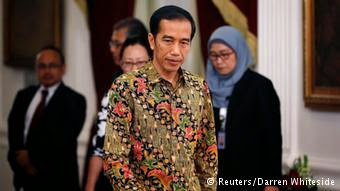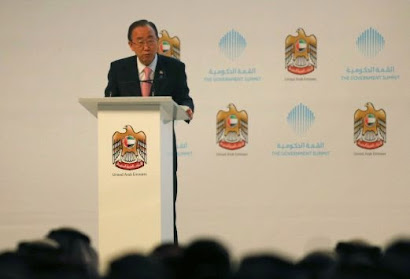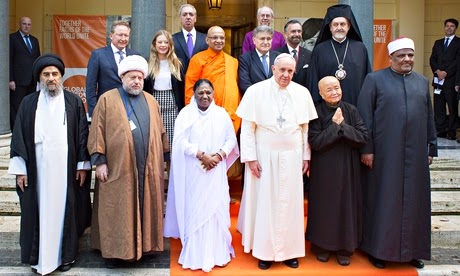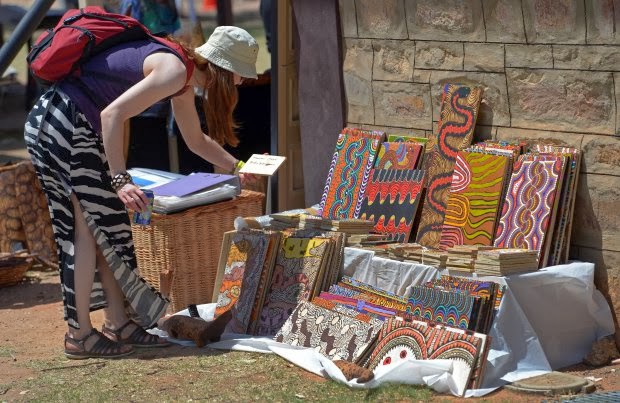Growing
numbers make changes to ceremony that takes place on eighth day of boys' lives
and is one of Judaism's oldest rituals
 |
American Jews having second thoughts about circumcising sons. Photograph:
P Deliss/Godong/Corbis |
When his
pregnant wife first challenged circumcising their son, Mike Wallach had a gut
reaction: "That's what we do, we're Jews!" But doubts about whether
the surgery was medically necessary and concern over his wife's opposition
forced Wallach to confront some questions.
Can you be
Jewish without Judaism's oldest ritual? he wondered. What does it mean to be
Jewish?
Speaking
with God, the 37-year-old screenwriter and grandson of Holocaust survivors
explained he was using the "free will and brain you gave me" to
reject circumcision. God, he concluded, wouldn't be impressed by the desire to
do something simply "for tradition's sake".
"I
wasn't at peace until I had that conversation," said Wallach, who grew up
in Washington and now lives in Brooklyn.
Wallach is
among a small but growing number of Jews who are slowly altering what has for
millennia been considered perhaps Judaism's core rite. The Bible says an adult
Abraham circumcised himself to mark the covenant between him and his
descendants and God. Any male who doesn't circumcise, God says in Genesis,
"that soul will be cut off from its people; he has broken My
covenant".
Many of
these Jews, according to rabbis and the ritual circumcisers known as mohels,
are rejecting the classic festive circumcision ceremony, called a brit milah,
or bris. For thousands of years, Jews have performed the ritual removal of the
penile foreskin on the eighth day of a boy's life, sometimes at the cost of
death during periods of antisemitism.
A very
small percentage, including Wallach, are not circumcising at all. Others,
uncomfortable with the joyous, public ceremony around an intimate surgical
procedure, are circumcising their sons in the hospital and crafting new
baby-welcoming ceremonies days or weeks later for family and friends. Some are
having no public service at all.
Meanwhile,
there is an unprecedented level of debate among friends, grandparents and
couples about whether to circumcise and how. Given that the topic merges sex,
religion, identity, culture, gender equity, health politics and antisemitism,
such discussions can grow intense or acrimonious.
"What's
a nice word for the Bermuda Triangle?" said Rabbi Shira Stutman of Sixth
& I Historic Synagogue, Washington's largest community of 20- and
30-something Jews. "Circumcision is at the nexus of everything that it
means to be Jewish ... It's primal. It's deeper than anything we can understand
rationally."
Sixth &
I gets so many questions about circumcision from younger Jews that it will hold
a class in early 2014, Stutman said. While the vast majority of Jews decide to
circumcise, she said, "the days of being 100% sure and not even thinking
about it are done". Stutman opted for a private ceremony when her son was
born.
Several
factors are fuelling the trend, including growing secular discomfort with the
practice, mixed data on medical necessity and an American culture increasingly
open to reinterpreting religious practices. The percentage of circumcision
procedures among the general population is also dropping.
American
Jews, on the whole, are now more immersed in secular culture and thus more apt
to look askance at the idea of a tribal scarification ceremony. High education
levels and a natural aesthetic are also prompting questioning among younger
Jews.
"Because
the American Jewish community is significantly educated, they're more likely to
do organic and wanting everything to be natural, and a bris is sort of primal
and ancient," said Julie Pelc Adler, director of the circumcision
programme for Reform Judaism, the largest US denomination of Jews. "It's
really different than the aesthetic of, 'Oh, let's bring this perfect new baby
and swaddle him in perfection.' It's looking at this perfect baby and saying,
'He's not perfect, we need to do this one thing.'"
 |
Rabbi Shira Stutman discusses circumcision at a class for converts to Judaism
at the Sixth & I Historic Synagogue in Washington. Photograph: Linda Davidson/
The Washington Post |
Ben
Rempell, 35, didn't consider himself particularly religious. So the USAid
employee was surprised at the force of his reaction in November 2009, when one
morning his then-pregnant wife, Danielle Rudstein Rempell, lobbed this
question: "Isn't circumcision another form of genital mutilation?"
Rempell
remembers "giving her a disgusted look" and becoming defensive and
angry. He became more so when she raised the question with their weekly Sunday
dinner group.
He began to
struggle with it on his own, unsure why the rite was so important to him given
that he was not a particularly observant Jew.
Ultimately,
he discovered, his motivation was more tribal.
"It
wasn't a Jewish thing, it was an identity thing, envisioning growing up and he
sees me and I see him and he asks why he's different. A child's identity is
their family," he said.
But isn't
Jewishness part of your identity?
"It
had to have something to do with Judaism. That's what we do. That's what I
am," said Rempell, who now lives with his family in Honduras.
His
secular-but-tribal argument for a son "who looks like his father"
convinced his wife. They now have two sons, both circumcised – but with no ceremony.
Not all
couples get on the same page. Several couples interviewed didn't want their
names used, either because their disagreement was so intense and they wanted to
put the issue in the past or because they were expecting and didn't want family
and friends to be drawn into their private debate. They tell similar stories of
angrily emailing American Academy of Pediatrics studies, painful conversations
challenging each other's concepts of Judaism and even circumcisions ending in
tears and fights.
Four statements from the American Academy of Pediatrics, the largest US body of
children's doctors, have wavered back and forth a bit since 1979. Most
recently, in 2012, the group said benefits outweigh potential risks but not
enough to recommend circumcision routinely. Organisations that have done the
most extensive polling on US Jews say there is no data on circumcision rates.
Binyamin
Biber, a rabbi of the small movement called Secular Humanistic Judaism, is
perhaps the only rabbi in the Washington area who advertises his willingness to
bless a welcoming ceremony for a boy who is uncircumcised. Requests for his
services are small but growing, from one or two each year in the past to four
or five a year now.
He sees
questions about circumcision as a natural product of a time when more and more
families are interfaith and parents aren't sure about a ritual once rooted in
special treatment for boys. The liturgy he uses doesn't mention God and
emphasises bringing the child into a "human covenant for a better world".
"We live
in a more cosmopolitan world and Jewish families have become very
intercultural," said Biber. "For those families, a ceremony which
regards Jewish males as privileged seems problematic, to put it mildly."
Rabbis who
are engaging Jews' questions about circumcision are asking people to think
about the ritual in a different way. "We do all sorts of things that hurt
our children that help them for the greater good. We vaccinate them, we ground
them, we take away their devices," Stutman told a wide-eyed class of
adults converting to Judaism one recent night as she ran through the
circumcision curriculum.
Several
people in the class at Sixth & I gasped when she explained that even when
circumcised men convert, they give a few drops of blood from the penis to represent
their commitment. "Remember we are an earthy people! We don't pretend we
don't have bodies!"
Adler said
the circumcision issue is just part of a world of questions about bringing
Jewish ritual and law into a new era. She fields questions, for example, about
whether the male child of a lesbian couple whose birth mother is not Jewish –
but whose other mother is – would be considered Jewish, or would the child need
a conversion component of his circumcision ceremony.
Judaism
generally was passed to children through their biological mothers. But in
recent decades more liberal Jewish denominations have been recognising
biological fathers as well.
When it
comes to religious evolution, she asks, "where is the line? At what point
is it no longer Judaism? Each choice distinguishes Jews, and it's a slippery
slope."
This
article appeared in the Guardian Weekly, which incorporates material from the
Washington Post
Related Articles:
Question: Dear and beloved Kryon: What should we know about "Brit-Mila" (Jewish circumcision)?
Answer: All circumcision was based on commonsense health issues of the day, which manifested itself in religious-based teaching. That basically is what made people keep doing it. This eighth-day-from-birth ritual is no more religious today than trimming your fingernails (except that Brit-Mila is only done once, and it hurts a bit more).
It's time to start seeing these things for what they are. Common sense is not static. It's dynamic, and related to the culture of the time. Yesterday's common sense about health changed greatly with the discovery of germs. It changed again with practices of cleanliness due to the discovery of germs, and so on. Therefore, we would say that it really doesn't make a lot of difference in today's health practices. It's done almost totally for cultural historic and traditional purposes and holds no energy around it other than the obvious intent of the tradition.
This is also true for a great deal of the admonishments of the Old Testament regarding food and cleanliness, and even the rules of the neighborhood (such as taking your neighbor's life if he steals your goat, or selling your daughter in slavery if you really need the money... all found in scripture). The times are gone where these things matter anymore, yet they're still treated with reverence and even practiced religiously in some places. They're now only relics of tradition, and that's all. If you feel that you should honor a tradition, then do it. If not, then don't. It's not a spiritual or health issue any longer.
Be the boss of your own body and your own traditions. Follow what your spiritual intuition tells you is appropriate for your own spiritual path and health.


























